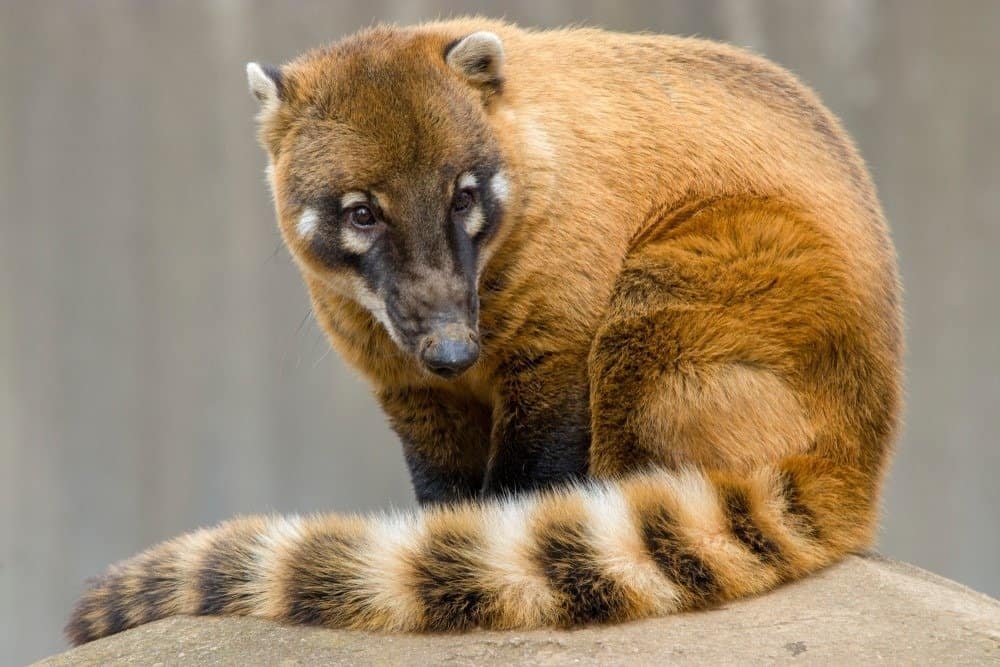
The post Trash Panda Lookalikes: 15 Animals That Resemble Raccoons appeared first on A-Z Animals.
Some animals have easily recognizable, iconic appearances, like poison dart frogs, zebras, and cheetahs. Another critter with a distinctive look is the raccoon. With a bandit-like black mask around their eyes, a striped bushy tail, and hunched-over physiques, raccoons are easy to identify on the street (or eating cat food on your porch). However, quick glances, wooded areas, the dark of night, and fast reactions might cloud your vision. Is what you saw truly a raccoon, or a different creature entirely? Keep reading to discover the 15 animals masquerading as raccoons.
This post was updated on October 11, 2025 to clarify physical details of the olinguito, the Japanese racoon dog as a species, red panda taxonomic family, kinkajou’s prehensile tale, European badger eye mask, American badger range, and wolverine behavior and range.
Coatimundi

South American coati (Nasua nasua) have ringed tails.
©Danny Ye/Shutterstock.com
From the genus Nasua comes the white-nosed coati, or the coatimundis. It’s actually part of the raccoon family, but not all have a ringed tail. Coati tails are thinner and less furry than their raccoon cousins as well. The coati has an upturned snout that the raccoon does not have and a lighter-colored coat.
Coati are approximately the same size as their raccoon cousins and also spend most of their time in trees. You’re less likely to see a coati on the eastern seaboard, though. Coati live in more tropical regions.
Japanese Raccoon Dog (Tanuki)
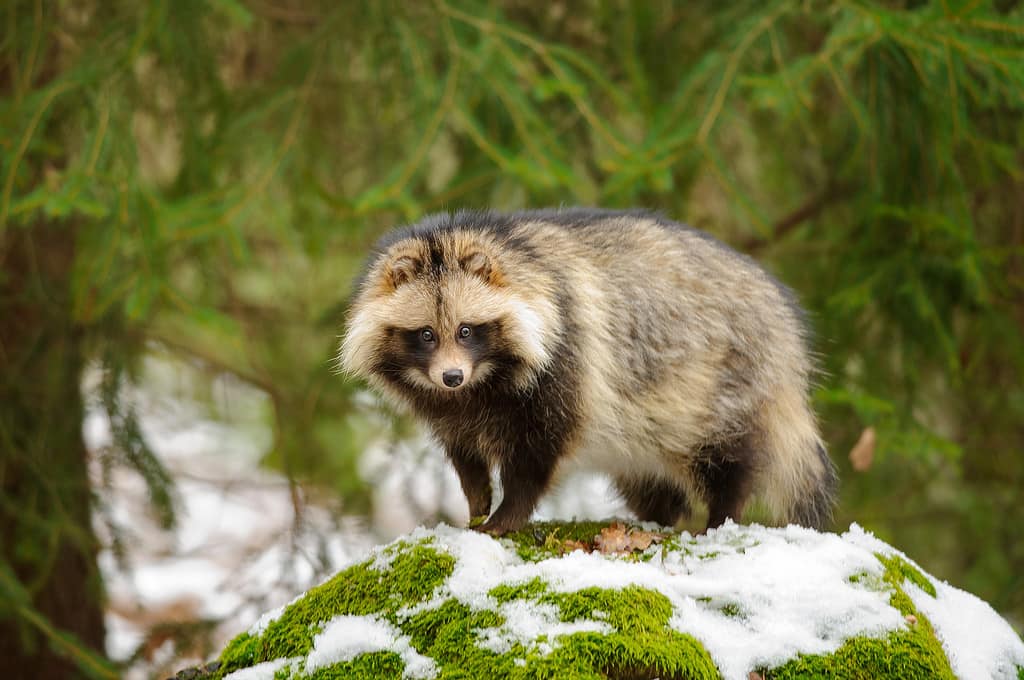
Raccoon dogs look similar to standard raccoons.
©sduben/iStock via Getty Images
If you’re in Japan, you may mistake the Asian country’s endemic Japanese raccoon dog (Nyctereutes viverrinus) for a raccoon. The Japanese raccoon dog is a species that lives in Japan’s forests. Like raccoons, they’re omnivorous, nocturnal canids who forage for their food. In addition to similar behavior, these two critters share dark coloring around the eyes, gray to black coloring, and a fluffy coat.
Olinguito
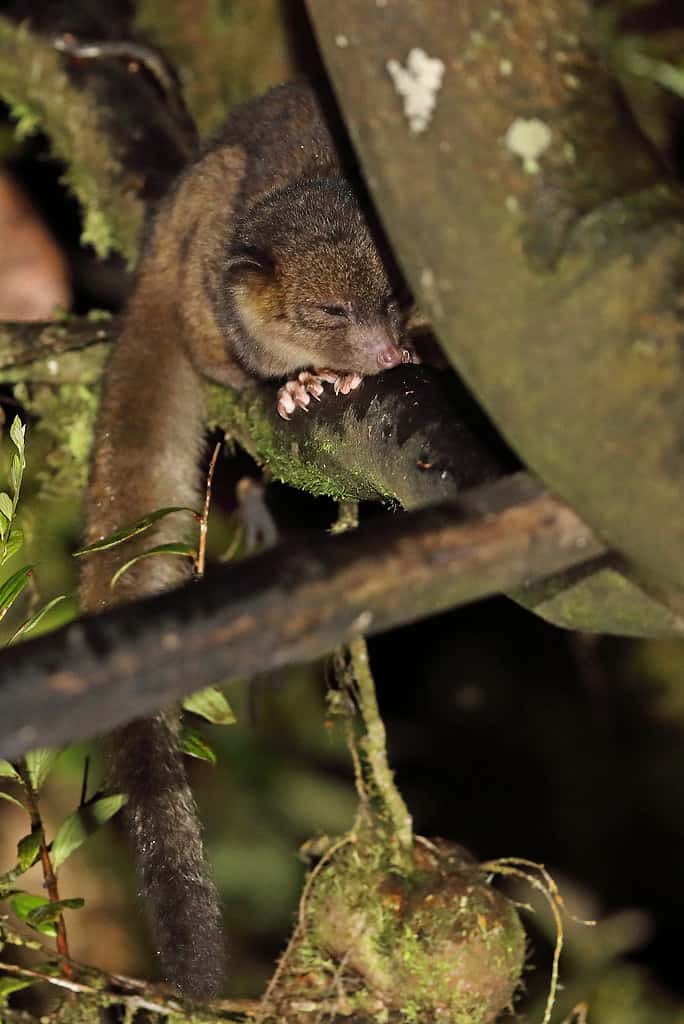
The olinguito (
Bassaricyon neblina) has a poofy tail.
©neil bowman/iStock via Getty Images
Living in Ecuador and Colombia is the newly discovered and large-eyed olinguito (Bassaricyon neblina). As part of the raccoon family, the olinguito looks similar to racoons in size, body shape, and hand structure. As for behavior, the olinguito is also nocturnal and arboreal.
Red Panda
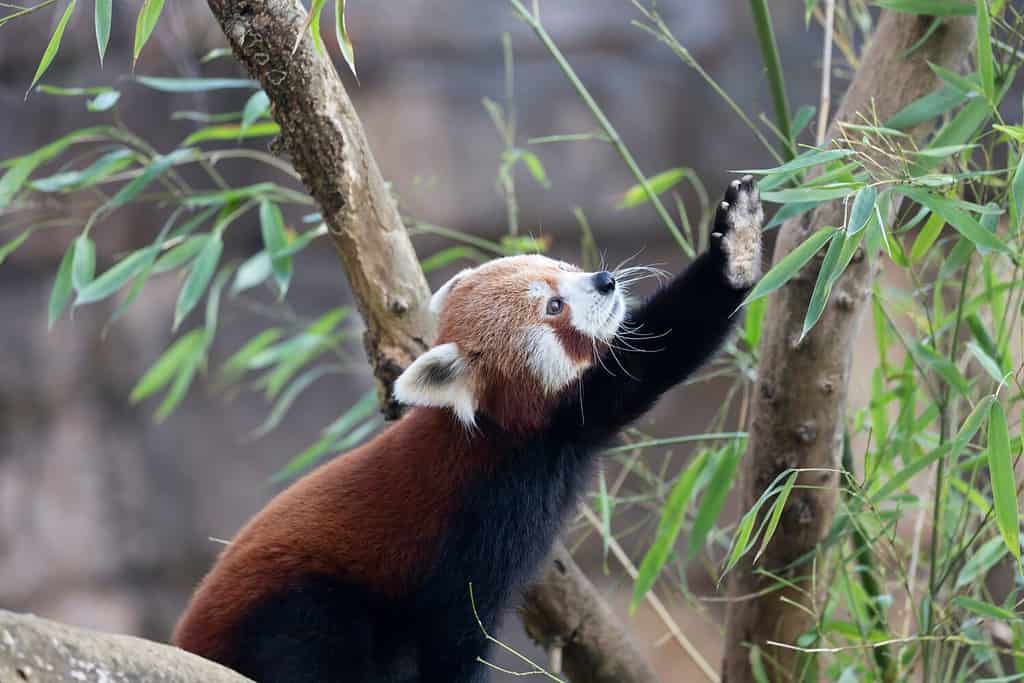
The red panda was in the same family taxonomy as raccoons at one time.
©DKeith/Shutterstock.com
Masked and adorable, the red panda looks like a softer, red-and-cream version of a raccoon. Scientists and researchers first placed the red panda in the raccoon family for their skulls, teeth, and ringed tails, but realized the animals needed to be in a family of their own. They have since been placed in the family Ailuridae.
Dr. Sabrina Kong, DVM, has a special place in her heart for red pandas. She’s a senior veterinary contributor at WeLoveDoodles and spoke to A-Z Animals about the similarities she sees between red pandas and raccoons from a professional perspective and a personal interest.
“First off, both have this ‘masked bandit’ look going on with those striking facial markings. Then there’s their love for climbing. Red pandas and raccoons are both arboreal, meaning they’re pretty nifty when scaling trees. It’s like watching skilled acrobats in a forest circus,” she said.
“Their diet? Well, both aren’t picky eaters,” Dr. Kong affirmed. “Raccoons are the ultimate omnivores, eating just about anything, while red pandas, though primarily bamboo munchers, won’t say no to a fruit, egg, or insect here and there. It’s like they both have this ‘foodie explorer’ badge in the animal kingdom.”
Finally, Dr. Kong talked about animal anatomy. “Let’s not forget those paws. Both have semi-retractable claws and a pseudo-thumb (an extended wrist bone for red pandas), making them the ultimate grabbers. Whether it’s a branch or a tasty snack, they’ve got the grip to match their sly looks.”
Kinkajou
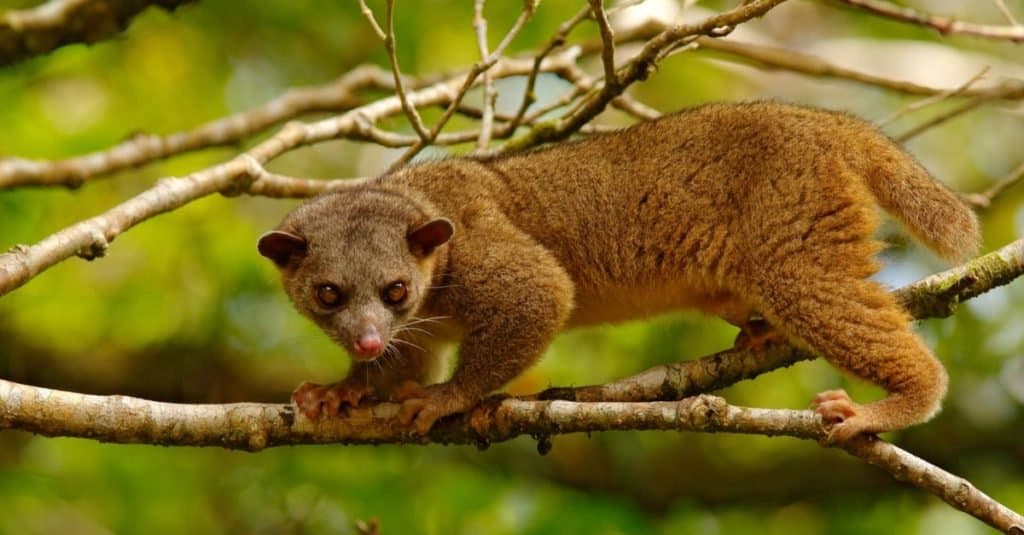
Kinkajous can rotate the ankles on their hind feet backward to facilitate movement up and down the tree.
©Ondrej Prosicky/Shutterstock.com
The kinkajou looks very similar to both the coati and the raccoon—and it should, as it’s in the same family! However, the kinkajou has a honey color to its fur rather than darker brown or gray. Their ringed prehensile tales are much less fluffy and shorter than a raccoon’s. Still, kinkajou live in trees, hunt at night, and have similar body structures to raccoons.
Ringtail Cats
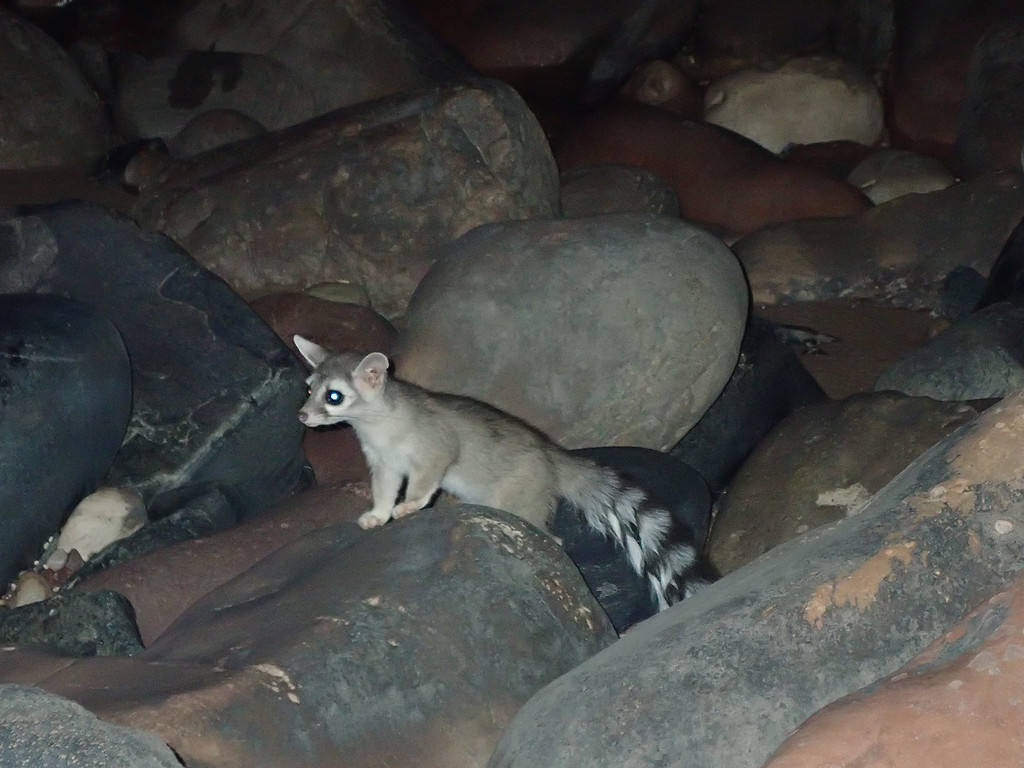
Ringtail cats have tails much like raccoons, but they have smaller bodies.
©lorentrager/iStock via Getty Images
If you see a ringed tail, there’s no guarantee it’s a raccoon. It could have been a ringtail or ringtail cat if you live in arid regions of the United States. This creature has a highly coveted coat of fur and tail; it’s even been legally trapped for it. The ringtail looks like a cross between a fox, a cat, and a raccoon. It has a plump and bushy ringed tail but a snouted face, small eyes, and whiskers like both cats and foxes.
Olingos
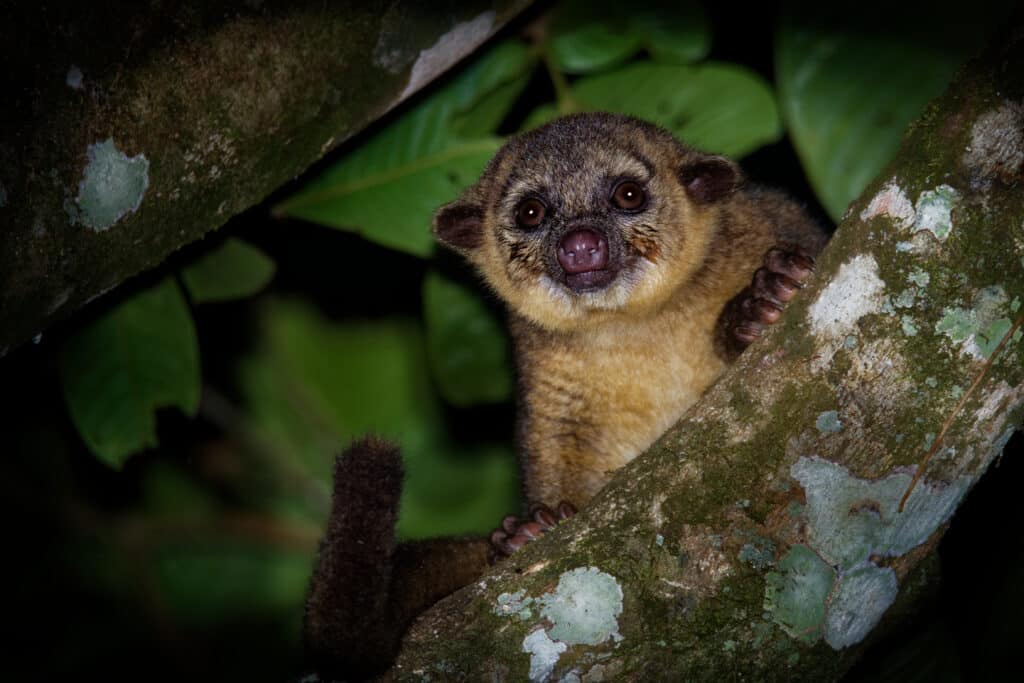
Olingos live in the trees of South America.
©Martin Pelanek/Shutterstock.com
A bit bigger than olinguitos (as you may be able to tell by the name), olingos have a more bushy ringed tail than their smaller counterparts and a slender, albeit larger, body. They’ll grow to be about three pounds and are missing the iconic black eye mask of a raccoon, but they are still part of the Procyonidae family.
European Badger
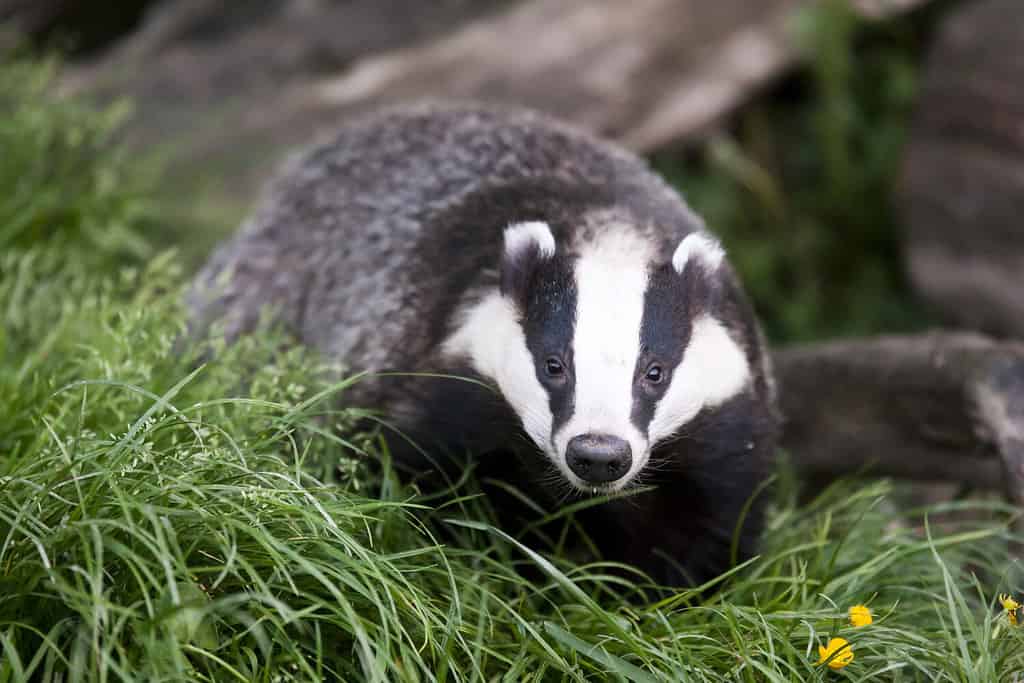
Badger masks are perpendicular to the mask a raccoon face wears.
©Edward Hasting-Evans/Shutterstock.com
Badgers can often get mistaken for raccoons, especially the European badger with its similar colored fur and unique eye mask. (Though badgers have longitudinal black facial stripes as opposed to the horizontal eye mask of racoons). Badgers are heavier than racoons, but they are both nocturnal and do most of their hunting at night, while sleeping during the day.
Cacomistle
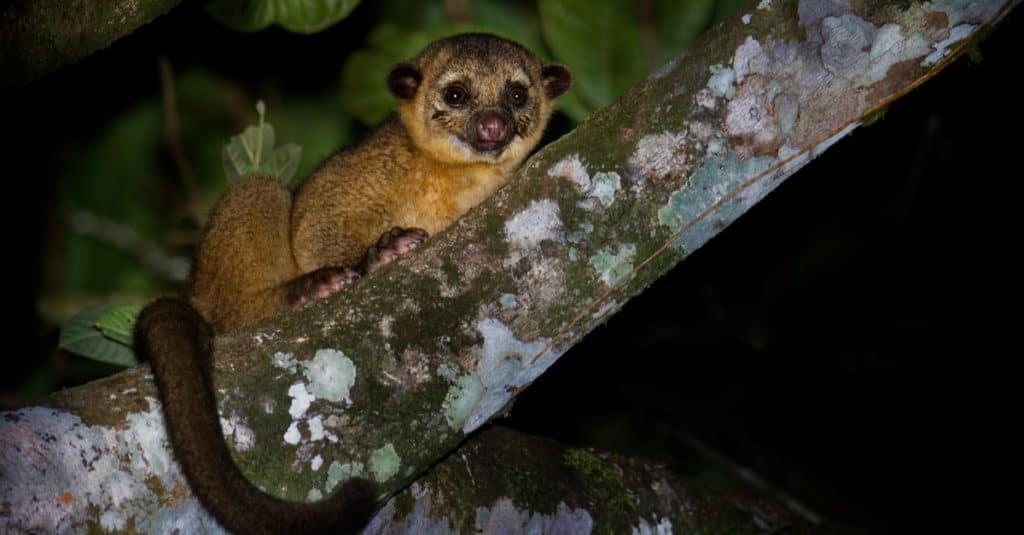
Cacomistles are of the same family as kinkajous.
©Martin Pelanek/Shutterstock.com
The solitary, nocturnal cacomistle has a ringed tail and a masked face like the raccoon. It’s also one of the final members of the raccoon family. While not every cacomistle has a ringed tail or masked face, many come in colorings similar to that of a raccoon.
Skunks
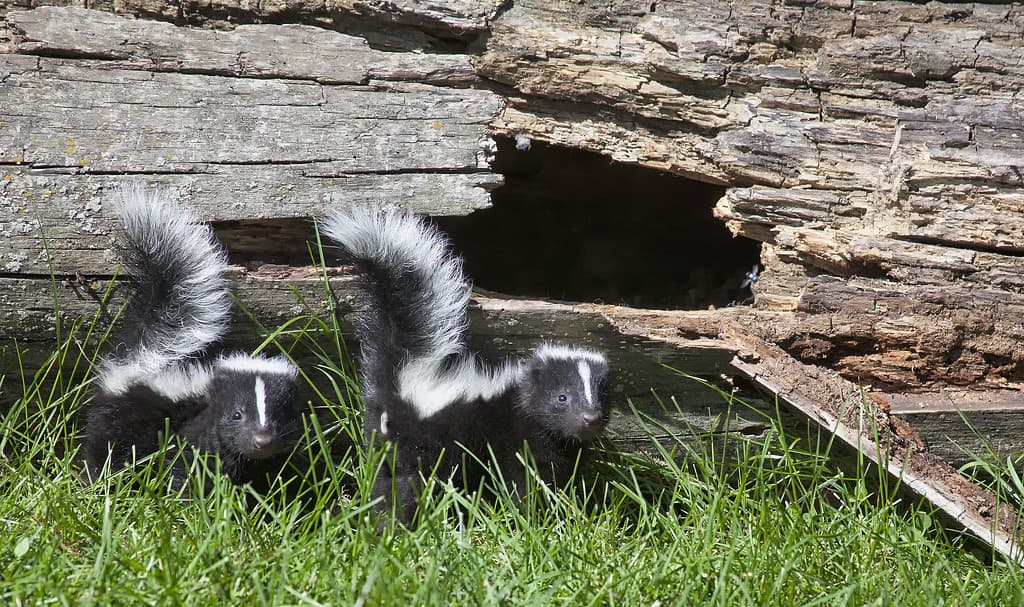
Skunks have a bushy, black-and-white tail like raccoons.
©Lynn_Bystrom/iStock via Getty Images
Both skunks and raccoons are black and white outdoor household pests with markings on their faces. However, raccoons are larger on average than skunks and don’t have the defense mechanism their smelly counterparts do. At night, though, skunks and raccoons can look similar rooting through your trash.
Burmese Ferret-Badger
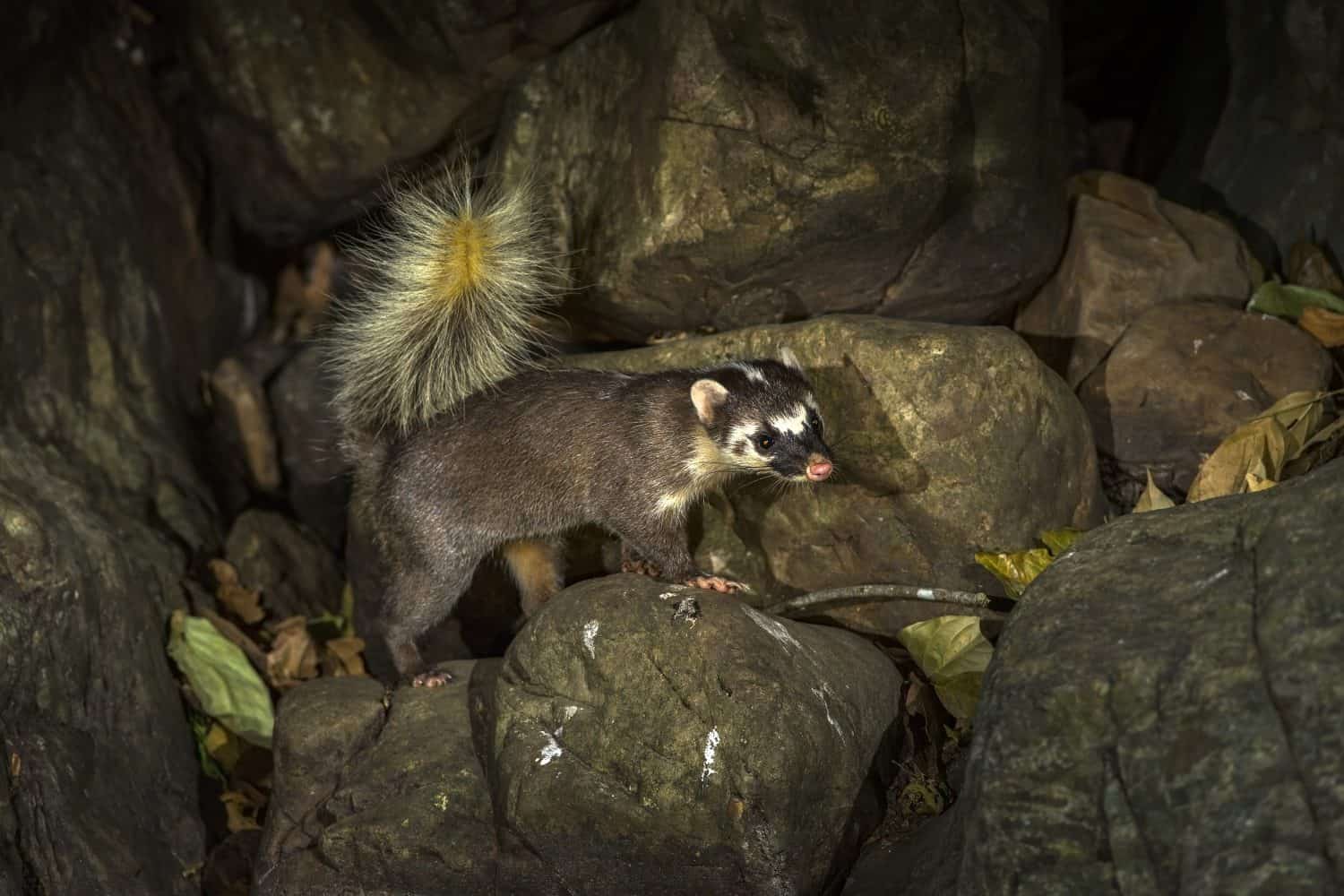
Ferret badgers look similar to raccoons from a distance.
©Sainam51/Shutterstock.com
Badgers often get mistaken for raccoons based on their size, striped face, and behaviors. The Burmese ferret-badger has a similar-looking mask to the raccoon that lives in forests and hunts at night. It’s considerably smaller than a raccoon, reaching only four or five pounds at full maturity.
American Badger
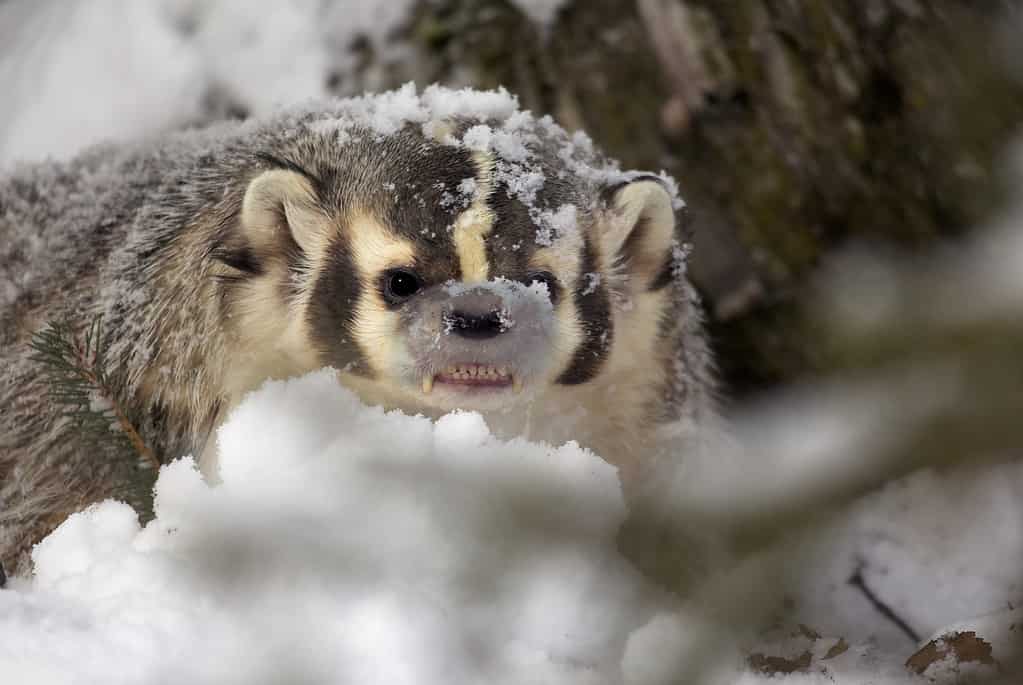
The American badger’s coat and mannerisms reflect that of a raccoon.
©moose henderson/iStock via Getty Images
Similar to the European badger, the American badger has a raccoon-like coat, weighs about the same as a normal raccoon, and opportunistically hunts at night. They are found across western and central North America, with outliers into parts of the northeast. They have also made homes for themselves in British Columbia.
Maine Coon Cat
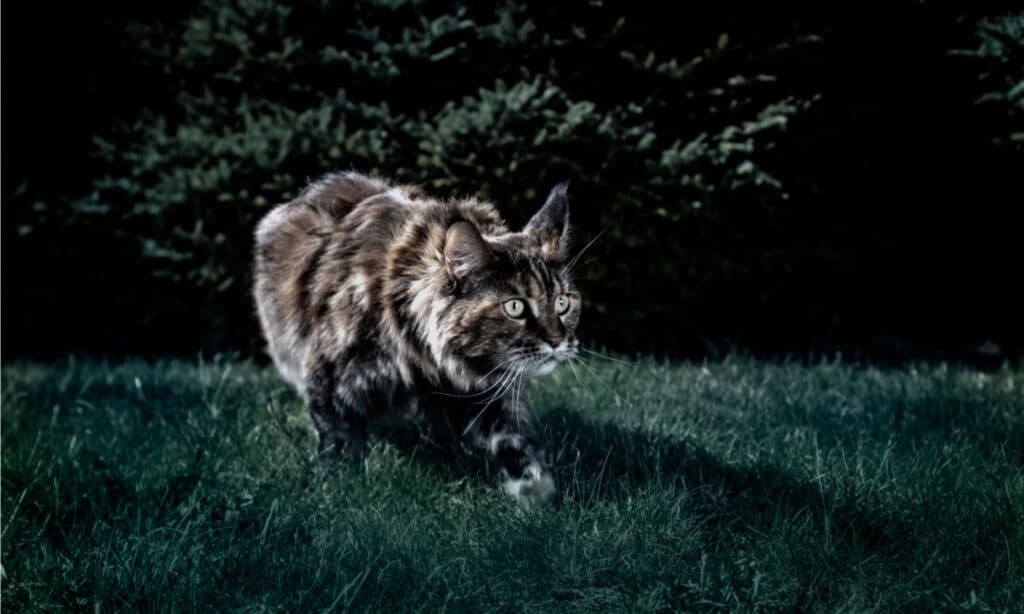
Maine Coon cats can resemble raccoons at night with a quick glance.
©Konstantin Zaykov/Shutterstock.com
If the only glance you catch of an animal on your porch is its fluffy tail, you may think you’ve seen a raccoon when it’s simply your neighbor’s Maine coon cat with a striped tail. Maine coons don’t typically have tails with clear rings; instead, it’s a striped gray and darker gray appearance. This breed of feline is larger than many other domesticated cats, so you may mistake a Maine coon for a more aggressive creature than it is.
Wolverine
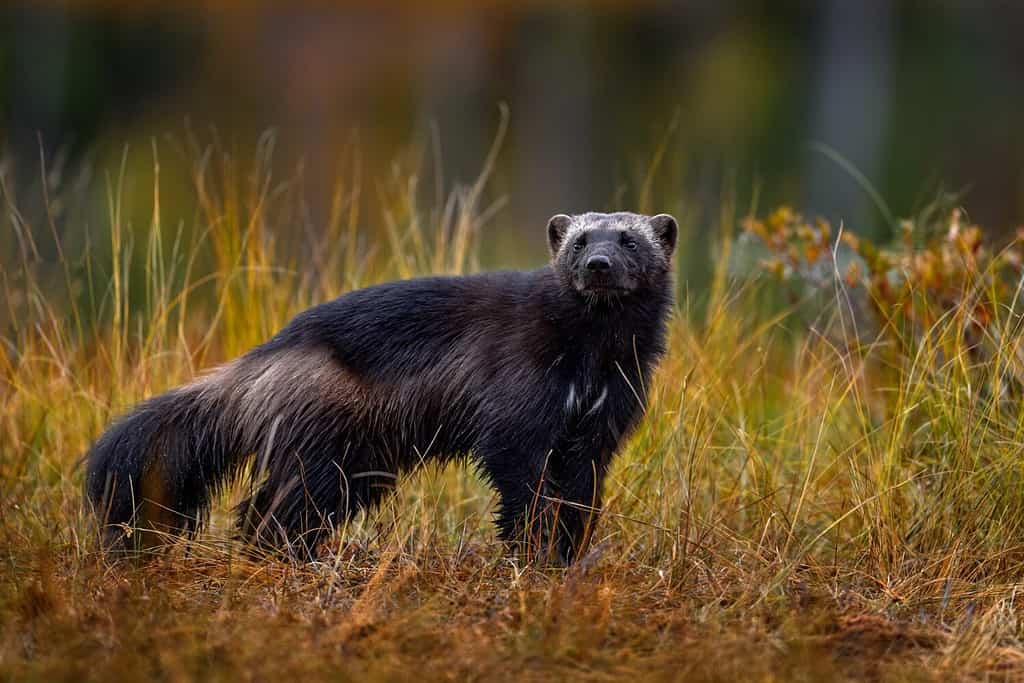
Some light-colored wolverines look like raccoons from a distance.
©Ondrej Prosicky/Shutterstock.com
In some regions of the United States, you may think you’ve seen a raccoon flit across your yard when in fact, you’ve seen a wolverine. At a glance and at night, the silhouette can fool you, but wolverines are substantially larger and occur mostly in remote northern/rocky regions. Though larger than their racoon cousins, wolverines do have a similar shape as well as a fluffy tail. It’s not a ringed tail, nor does the wolverine have mask-like markings on its face. Wolverines are also not typically urban-tolerant and often avoid humans. However, they are dark-colored nocturnal hunters.
Fox
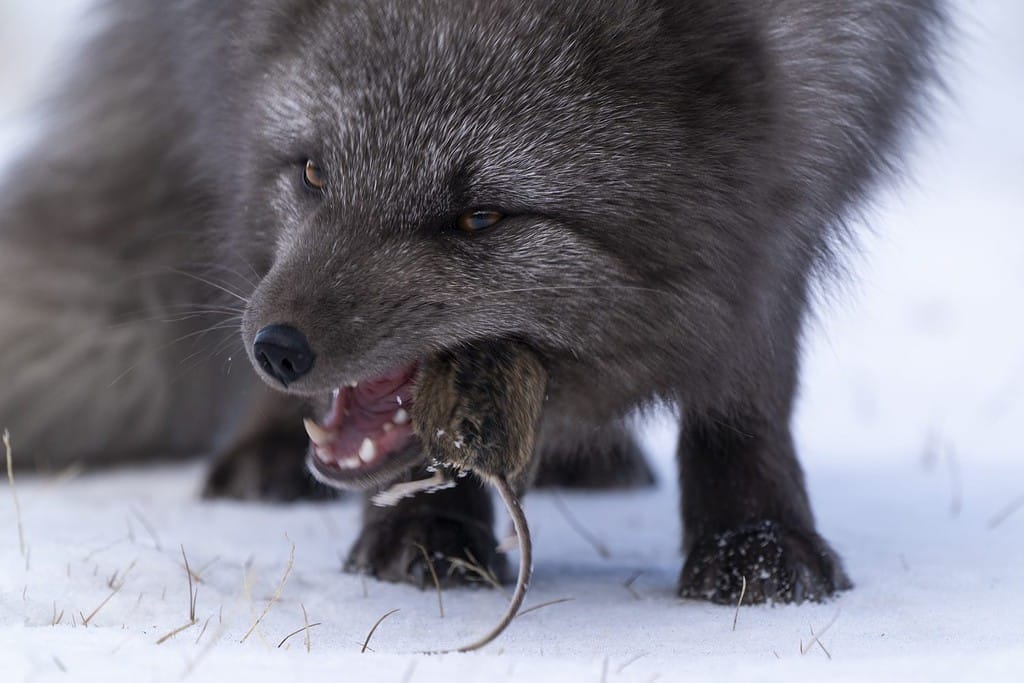
Gray foxes can look like raccoons at first glance.
©Jon Petur/Shutterstock.com
No, a fox and a raccoon don’t look the same in appearance, but they might look similar to you if it’s a dark night, the outside lights aren’t on, and you’ve just woken up to a creature eating out of your garbage cans. Like raccoons, foxes have urbanized themselves in cities and towns near their habitats. It’s easier to find food this way.
The easiest color fox to mistake for a raccoon is a fox with a standard cross-black morph. However, gray morphs may also look similar to raccoons to the bleary-eyed homeowner wondering what’s rooting around in the trash.
The post Trash Panda Lookalikes: 15 Animals That Resemble Raccoons appeared first on A-Z Animals.
October 11, 2025 at 06:12PMKatarina Betterton
.jpeg)
.jpeg)

0 Comments